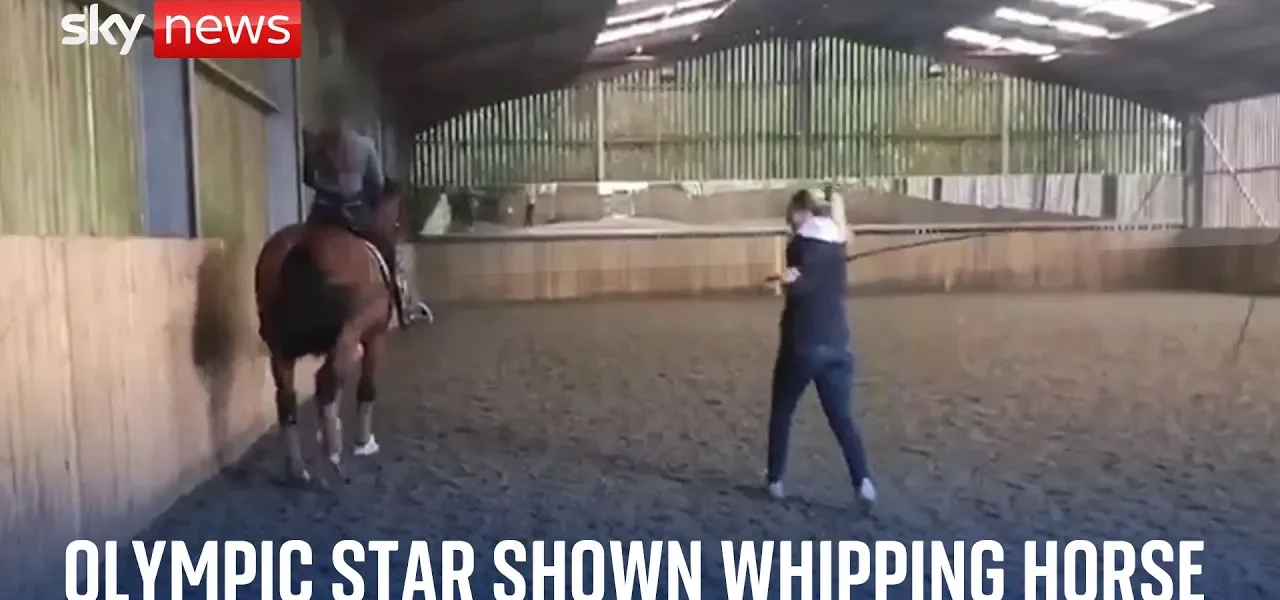Charlotte Dujardin’s Controversial Withdrawal from the Paris Olympics

In light of the serious allegations surrounding Charlotte Dujardin, Britain’s joint most decorated female Olympian, this article delves into the implications of her actions and the broader context of horse welfare in equestrian sports. With accusations of excessive whip use leading to her withdrawal from the Paris Olympics, we explore the reactions, the responsibilities of athletes, and the importance of horse welfare in training practices.
Introduction
The equestrian world has recently been shaken by allegations against Charlotte Dujardin, who has been accused of using a whip on a horse more than 24 times in just one minute. This behavior has raised significant concerns regarding animal welfare and the ethical treatment of horses in competitive sports. Dujardin’s decision to withdraw from the upcoming Paris Olympics has been characterized as an “error of judgment” in the wake of the disturbing video that surfaced, prompting widespread discussion about the standards of conduct in the equestrian community.
The Incident and Immediate Reactions
Upon the release of the video that depicted the alleged incident, immediate outrage ensued from various stakeholders in the equestrian sport. Ry Hour, Chief Executive of World Horse Welfare, expressed his dismay at the footage, calling it “extraordinary and distressing.” He emphasized the unacceptability of such behavior and welcomed the swift actions taken by the FEI (Fédération Equestre Internationale) and British Dressage to address these serious allegations.
Community Response
The equestrian community’s response has been multifaceted, involving:
- Condemnation from animal welfare organizations.
- Calls for stricter enforcement of existing rules and regulations regarding horse welfare.
- Support for Dujardin’s decision to withdraw, allowing for reflection and accountability.
Understanding Whip Use in Equestrian Sports
To fully grasp the implications of this incident, it is crucial to understand the role of whip use in horse training and competition. While a whip can serve as a communication aid, it should never be used excessively or inappropriately. The distinction between acceptable and unacceptable use can sometimes be blurred, particularly for those outside the equestrian community.
Acceptable Uses of the Whip
In the context of horse training, the whip is intended to:
- Encourage movement and responsiveness.
- Support other aids, such as leg pressure or voice commands.
- Provide a gentle reminder without causing harm or distress.
Excessive Whip Use
Conversely, excessive whip use, as depicted in the allegations against Dujardin, constitutes abuse and is not representative of responsible training practices. Experts and advocates stress the importance of empathy, care, and respect for the horse, which are foundational principles in equestrian sports.
The Responsibilities of Equestrian Athletes
As representatives of their sport, equestrian athletes hold significant responsibility towards their animals. Dujardin’s case raises important questions about accountability and the ethical treatment of horses in competitive settings.
Codes of Conduct
Both the FEI and British Dressage have established codes of conduct designed to protect horse welfare, which include:
- Strict guidelines on whip use and other training methods.
- Emphasis on humane treatment and respect for the horse’s well-being.
- Regular training and education for athletes regarding animal welfare.
Collective Responsibility
It is vital for all participants in the equestrian community—riders, coaches, and organizations—to uphold these standards. The responsibility to ensure the welfare of horses extends beyond regulatory bodies to every individual involved in the sport. This collective approach can foster a culture of compassion and respect towards horses.
Conclusion
The allegations against Charlotte Dujardin serve as a critical reminder of the ongoing challenges regarding horse welfare in equestrian sports. While her actions have drawn significant criticism, they also highlight the need for a cultural shift within the sport to prioritize the well-being of horses. Moving forward, it is essential for all stakeholders to engage in meaningful dialogue about best practices and to hold one another accountable. As the equestrian community reflects on this incident, let us strive to ensure that respect and compassion remain at the forefront of our interactions with these magnificent animals. For more insights on horse welfare and responsible training practices, visit our related articles section.
“`




